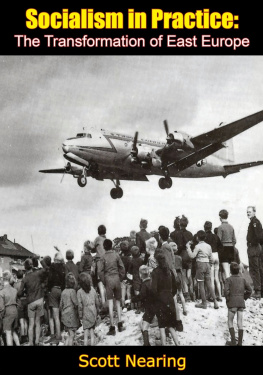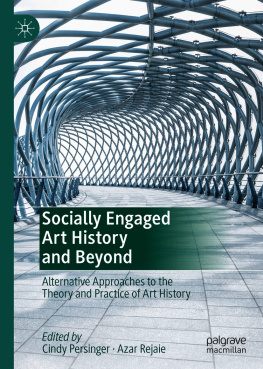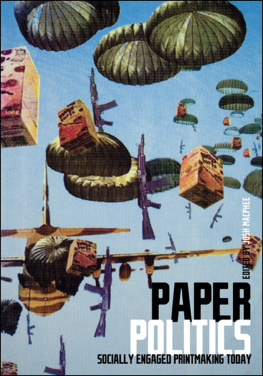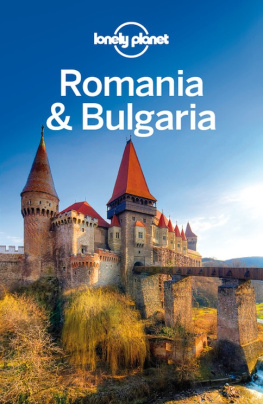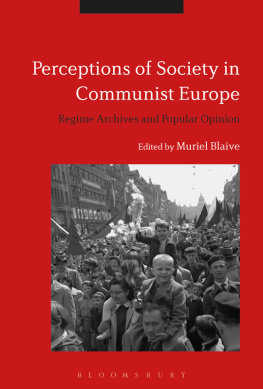Izabel Galliera is Assistant Professor of Modern and Contemporary Art History and Theory, and Curator of the Rice Gallery, at McDaniel College in Westminster, Maryland. Her research has been published in the Journal of Curatorial Studies, ARTMargins, FIELD: A Journal of Socially Engaged Art Criticism, and anthologies such as Collaborative Now: Art in the Twenty First Century (2016) and Redefining Creativity: Multi-Layered Collaborations in Art and Art Historical Practice (2017).
Socially Engaged Art after Socialism is the first comprehensive scholarly treatment of the important new forms of socially engaged art that emerged in Central and Eastern Europe following the demise of the USSR. Its publication represents an important intervention in the emerging critical and theoretical debate around socially engaged art, and will allow us to further broaden the geopolitical scope of this important research.
Grant Kester, Professor of Art History,
University of California, San Diego; author of
Conversation Pieces: Community and Communication
in Modern Art and The One and the Many:
Contemporary Collaborative Art in a Global Context

Published in 2017 by
I.B.Tauris & Co. Ltd
London New York
www.ibtauris.com
Copyright 2017 Izabel Galliera
The right of Izabel Galliera to be identified as the author of this work has been asserted by the author in accordance with the Copyright, Designs and Patents Act 1988.
All rights reserved. Except for brief quotations in a review, this book, or any part thereof, may not be reproduced, stored in or introduced into a retrieval system, or transmitted, in any form or by any means, electronic, mechanical, photocopying, recording or otherwise, without the prior written permission of the publisher.
Every attempt has been made to gain permission for the use of the images in this book. Any omissions will be rectified in future editions.
References to websites were correct at the time of writing.
International Library of Modern and Contemporary Art 33
ISBN: 978 1 78453 713 5
eISBN: 978 1 78672 222 5
ePDF: 978 1 78673 222 4
A full CIP record for this book is available from the British Library
A full CIP record is available from the Library of Congress
Library of Congress Catalog Card Number: available
Contents
List of Illustrations
Book cover for Trvnytelen avantgrd: Galntai Gyrgy balatonboglri kpolnamterme 19701973 (Illegal Avant-garde: The Chapel Studio of Gyrgy Galntai in Balatonboglr 19701973). Photo courtesy of Artpool Art Research Center.
Tams Szentjby, Expulsion Exercise: Punishment-Preventive Auto-Therapy. Photograph documenting performance at Chapel Studio in Balatonboglr, 1972. Photo copyright Gyrgy Galntai. Courtesy of Artpool Art Research Center.
Lszl Beke, The Meeting of Czechoslovakian and Hungarian Artists, 1972, Chapel Studio in Balatonboglr. Outdoor Action. Photo copyright Gyrgy Galntai. Courtesy of Artpool Art Research Center.
Lszl Beke, The Meeting of Czechoslovakian and Hungarian Artists, 1972, Chapel Studio in Balatonboglr. Photo work documenting the Handshaking Action. Photo courtesy of Artpool Art Research Center.
Image of Galntai painting a tourist sign on the rooftop of the Chapel Studio, 1971. Photo courtesy of Artpool Art Research Center.
Image of group of people, showing the T-shirt printed on the spot using the stencil made by Galntai, 1971. Photo copyright Gyrgy Galntai. Courtesy of Artpool Art Research Center.
Aerial map of downtown Budapest showing the location of the artists projects in the Polyphony: Social Commentary in Contemporary Hungarian Art exhibition, 1993. Photo courtesy of C3 Center for Culture & Communication Foundation, Budapest, Hungary.
Zsolt Koroknai, Telephone Booth Gallery, 1993. Indirect audio-mail-art action. Public telephone booths in different locations in Budapest. Queue outside the Telephone Booth Gallery at Deak Ferenc Street. Photo courtesy of C3 Center for Culture & Communication Foundation, Budapest, Hungary.
Gyula Varnai, Agitator, 1993. Acoustic installation at the corner of Rottenbiller and Damjanich Streets, Budapest. Photo courtesy of C3 Center for Culture & Communication Foundation, Budapest, Hungary.
Alexandru Chira, Reminding, for Suggesting the Rain and the Rainbow, 1994, site-specific installation in the village of Tauseni, Romania. Photo courtesy of the International Center for Contemporary Art, Bucharest, Romania.
Marcel Bunea, Exodus Traces, 1994, detail of the collaboratively built decorative throne by the artist and a Roma community near the city of Lapusi, Romania. Photo by Jannine Huzinga, courtesy of the International Center for Contemporary Art (ICCA), Bucharest, Romania.
Adrian Timar, The Transylvanian Gazette, 1994, silk-printed onto newspaper, Brasov, Romania. Photo by Jannine Huzinga, courtesy of the International Center for Contemporary Art (ICCA), Bucharest, Romania.
Exhibition01010101, 1994, installation view at the Romanian Peasant Museum, Bucharest, design by Marius Marcu. Photo by Irina Cios, Courtesy of the International Center for Contemporary Art (ICCA), Bucharest, Romania.
The City Group, Chameleon, 1990, public action and sculpture, Sofia, Bulgaria. Courtesy of Philip Zidarov.
Kalin Serapionov, The Hot Soup and My Home Community, 1998. Single channel video projection, SVHS, Pal, no sound, 915 (loop). Digitally re-mastered in 2002. Installation view in the Bulgariaavantgarde exhibition, Knstlerwerkstatt Lothringerstrasse 13, Munich 1998. Photo: author archive. Courtesy of Kalin Serapionov.
Unmaking Dan, performance, filmed and edited by Kalin Serapionov after the idea of Luchezar Boyadjiev, 2010, DVD, Pal, 16:9, Institute for Contemporary Art-Sofia. Images courtesy of ICA-Sofia.
View of Szll Klmn Square (formerly Moszkva Tr), the site for Moszkva Tr (Gravitacio) /Moscow Square (Gravitation) exhibition, Budapest, Hungary, 2012. Photo by Izabel Galliera.
View of Moszkva Tr Bistro, a site for Moszkva Tr (Gravitacio) /Moscow Square (Gravitation) exhibition, Budapest, Hungary, 2012. Photo by Izabel Galliera.
Daniel Knorr, Trams and Institutions, 2007, in the frame of the exhibition project Public Art Bucharest, 2007. Photo courtesy of Timotei Nadasan.
h.arta, Project Space, in the frame of Spaiul Public Bucureti / Public Art Bucharest 2007, Poliphonic Orchestra, performance by Reni Hofmller. Image courtesy of h.arta.
h.arta, Project Space, in the frame of Spaiul Public Bucureti / Public Art Bucharest 2007. Image courtesy of h.arta.
Jnos Sugr, Time Patrol, 2003, as part of the exhibition project Moszkva Tr (Gravitacio) /Moscow Square (Gravitation). Photo by Zoltn Kerekes, courtesy of Jnos Sugr.
Jnos Sugr, Time Patrol, 2003, detail, as part of the exhibition project Moszkva Tr (Gravitacio) /Moscow Square (Gravitation). Photo by Zoltn Kerekes, courtesy of Jnos Sugr.
Luchezar Boyadjiev, Hot City Visual, 2003. Detail: Poster from the advertisement campaign for Stefans Brigade (and Sons-in-Law), 70 x 100 cm. Image courtesy of Luchezar Boyadjiev.
Luchezar Boyadjiev, Hot City Visual, 2003. Detail: Super! Super! video clip, 4:26 min. Stills from the video clip for the advertisement campaign for Stefans Brigade (and Sons-in-Law). Image courtesy of Luchezar Boyadjiev.
Next page


